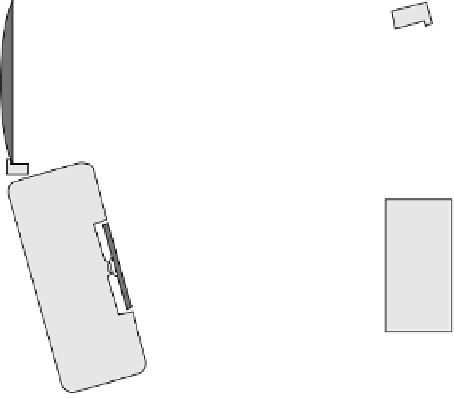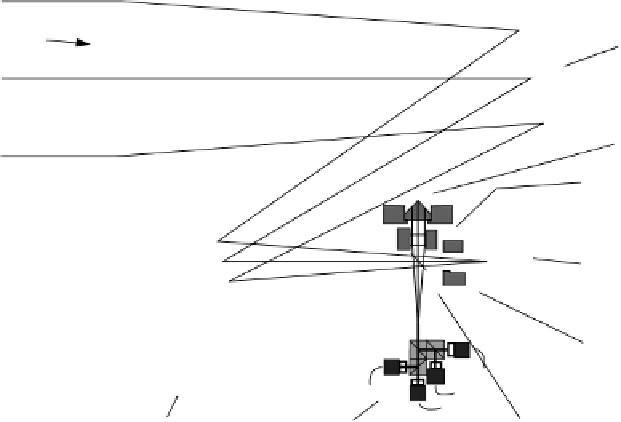Cryptography Reference
In-Depth Information
that for most systems in Table 9.2, the loss budget can be between 20 and 30
dB, and systems tolerating this sort of loss are well within our reach.
Receiver efficiency is common to all systems. Detector efficiencies of 70%
are easily achieved for near-infrared wavelengths, while narrow-band filter-
ing can also reach 70% transmission. By optimally coating telescope mirrors,
transmission in the near-infrared can reach 90%, while relay lenses, beam
splitters, and waveplates in the Bob module can reduce efficiency by 60%. All
in all, a good target is to design a receiver with efficiency of about 30% (
η
=
0
.
3).
9.5.2 Feasibility of Faint Pulse Quantum Key
Distribution Systems
The system closest to realization is the faint pulse quantum key distribu-
tion system described in Section 9.3. Key factors defining the feasibility of
Plane mirror
Lens
Retro reflector
Lens
CMOS
Sensor
Narrow
bandwidth filter
Beam splitter
Tip-tilt
mirror
Laser
source
optics
Figure 9.11
Breadboard for Alice suitable for development into a lightweight system
for space operation. Includes tip-tilt mirror for closed-loop fine pointing and vibration
compensation. The design is based on an f/10 telescope with 1 m focal length. The
CMOS sensor (it could be a CCD in a final design) would have pixel size typically
10 µm, which with interpolation techniques would allow pointing to better than 10 µR
over a field of view of 10 mR (1000 pixels). The retrocube system is used to produce
a weak spot from the outgoing beam on the camera. Point ahead problems due to
Doppler shifts are solved by displacing the image of the ground station guidestar
from the image of the laser source. Note also the unlabeled spatial filter and narrow-
band filter between source and first beam splitter.































